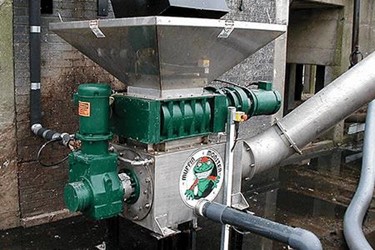Monster Compactor Cleans-Up At Seattle Treatment Plant

In 2004 a team of researchers from King County’s Wastewater Treatment Division took on the task of cleaning up problems with the discharged screenings at their two treatment plants. The screenings were filled with excessive water, fecal and other organic matter.
The local landfill even put restrictions on the time and place screenings were unloaded due to the high fecal content. Before screenings could be dumped, the landfill dug special pits then would immediately cover them. The team was concerned the restrictions might one day impact plant operations.
The team analyzed various solutions and decided to test a Screenings Washer Monster® (SWM) at the South Plant in Renton. The SWM was tested for a month and the trial unit dramatically improved screenings cleanliness and odor. The team recommended the county purchase a unit from JWC Environmental of Costa Mesa, California.
“There were several issues we looked at,” said Curtis Steinke, a Process Analyst for King County and member of the research team. “First, we looked at the SWM’s ability to provide additional dewatering and removal of fecal matter. Second, we compared its performance to our current screening compactor unit, which lacked a grinder.”
South Plant’s screening system consists of bar screens with 3/8-inch (10 mm) openings that remove trash and rags from the average daily flow of 78 million gallons (3,417 l/s). The screenings are pumped to a washing and compacting unit which is supposed to wash, clean and dewater the screenings; however the unit often became overloaded, and discharged screenings containing lots of bound water.
Get unlimited access to:
Enter your credentials below to log in. Not yet a member of Water Online? Subscribe today.
